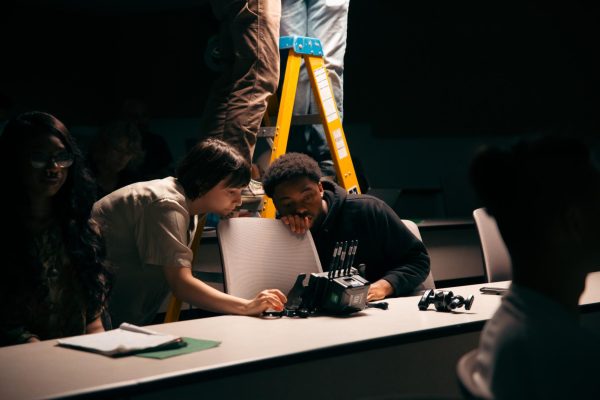The shaping of “The Soloist”
April 23, 2009
Photos courtesy of Francois Dunamel
Credit: DKS Editors
Nathaniel Ayers pulled out two sticks from his shopping cart, “Beethoven” written on one and “Brahms” on the other. Ayers then said he tapped them when the rats came out of the sewers, making them scatter immediately.
That same night, he recited the Hamlet soliloquy in a perfect Shakespearean accent. That same night, he looked in the windows of houses in a rundown Los Angeles neighborhood and said, “Mr. Lopez, you know Mozart and Beethoven worked through the night in rooms like those. They lived and breathed as humans do, and they created something that lasts for centuries. Isn’t that an inspiration?”
That was also the night Steve Lopez, Los Angeles Times columnist, had the inspiration for a series of columns, which became a book and ultimately, the movie “The Soloist.” The film stars Jamie Foxx and Robert Downey Jr. and will be released in theaters tomorrow.
Lopez had been interviewing and spending time with the homeless, schizophrenic Ayers for six months before this night. Lopez said when he first met Ayers, he “only had the selfish motive to get a column.” Unknowingly, he stumbled upon what he now calls “the most inspirational experience,” threaded with themes of friendship and the simple power of human connection. All of this coming from a guy living out of a shopping cart.
Lopez first saw Ayers playing a two-stringed violin on the streets of Los Angeles – without a case to collect money, which caught Lopez’s eye. Lopez said he thought the scene was endearing to stumble on in a city with four million people. In his information gathering, he discovered the man went to Juilliard.
Lopez began using Ayers as the compelling human face behind his 2005 columns, which pushed for policy changes in the way homeless individuals were treated on the streets.
“I think one of the many gifts of Nathaniel is that he lent his name to the cause, put a human face on these issues. He has such a story of heartbreak and hope. He drew people in,” Lopez said. “From the very first one, the readers of the column saw this as a story of second chances.”
Hollywood saw the story’s power as well, as two of the film’s producers approached Lopez in 2007, asking to make his story into a screenplay and production.
Initially, Lopez had some concerns about the story being changed or simplified to the point it would be unrecognizable, but he also said “they made the movie they said they’d make.”
Throughout the production, he was consulted for general ideas, such as how particular scenes should be portrayed. But overall, Lopez said he wasn’t too involved in the production.
“At a certain point, there’s not much they need from me,” Lopez said. “They have their vision for the story and how to make the movie, and they go do their own thing.”
Involved in casting only to the point that he was aware of who was being considered, Lopez said he couldn’t be happier to end up with Robert Downey Jr. playing his role.
“I told him I trusted his instincts as an actor, and I didn’t want him to feel obligated to play me,” he said. “I wanted him to use his great talents and skills to make something original.”
As for Ayers, Lopez said he’s still living in the apartment he first moved into three years ago after putting in a lot of work. Lopez said he is still in constant contact with him, whether when he comes to the Los Angeles Times’ basement music room to play drums or accompanies Lopez to Dodgers’ games.
“I actually talked to him about 20 minutes ago,” Lopez said. “He still has good days and bad, still is progressing and still has a way to go.”
Contact all correspondent Brenna McNamara at [email protected].























